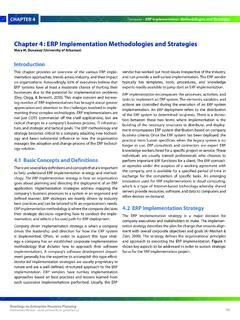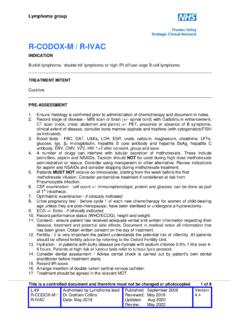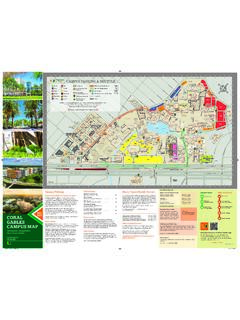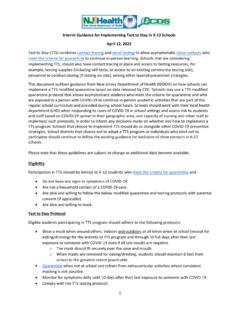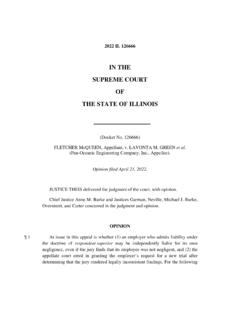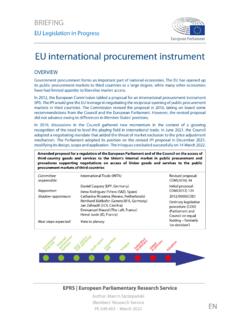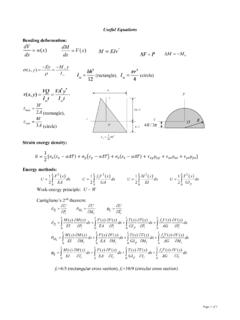Transcription of STUDY OF FILTRATION FOR POINT-OF-USE DRINKING WATER ...
1 STUDY OF FILTRATION FOR POINT-OF-USE DRINKING WATER . TREATMENT IN NEPAL. BY. JUNKO SAGARA. BACHELOR OF ENGINEERING. CIVIL ENGINEERING AND APPLIED MECHANICS. MCGILL UNIVERSITY, JUNE 1999. SUBMITTED TO THE DEPARTMENT OF CIVIL AND ENVIRONMENTAL ENGINEERING IN PARTIAL. FULFILLMENT OF THE REQUIREMENTS FOR THE DEGREE OF. MASTER OF ENGINEERING IN CIVIL AND ENVIRONMENTAL ENGINEERING. AT THE. MASSACHUSETTS INSTITUTE OF TECHNOLOGY. JUNE 2000. 2000 Junko Sagara All rights reserved The author hereby grants to permission to reproduce and to distribute publicly paper and electronic copies of this thesis document in whole and in part. Signature of the Author Department of Civil and Environmental Engineering May 5, 2000. Certified by Susan Murcott Lecturer Department of Civil and Environmental Engineering Thesis Supervisor Accepted by Daniele Veneziano Professor of Civil and Environmental Engineering Chairman, Departmental Committee on Graduate Studies STUDY OF FILTRATION FOR POINT-OF-USE DRINKING WATER TREATMENT IN NEPAL.
2 By Junko Sagara Submitted to the Department of Civil and Environmental Engineering on May 5, 2000 in Partial Fulfillment of the Requirements for the Degree of Master of Engineering in Civil and Environmental Engineering ABSTRACT. POINT-OF-USE DRINKING WATER FILTRATION was studied as a possible DRINKING WATER treatment alternative in Nepal. Three filter/purifier systems, Nepalese ceramic candle filter, Indian ceramic candle filter and IPI purifier, were tested for turbidity and microbial removal efficiencies. The test results indicated that the filter systems had very high turbidity removal efficiencies. All systems reduced the turbidity level of WATER to less than 1 NTU. However, the FILTRATION processes themselves were observed to be not adequate in terms of removing microbial contaminants. IPI purifier when used together with chlorine disinfection eliminated all microbial contamination, however, in all other cases the treated WATER was still microbiologically contaminated.
3 In order to improve the microbial removal efficiency of Nepalese ceramic candle filter, colloidal silver coating was applied onto the ceramic filter candle. The experiments were conducted for filter candles with several concentrations of silver. It was observed that the filters with more than 10mg of silver removed all hydrogen sulfide producing bacteria. However, complete removal of total coliform was not achieved. Moreover, it was not tested whether the effectiveness of the silver remains after long term use of the filter, and thus a further STUDY is recommended. Out of all three filter systems tested, the Nepalese ceramic candle filter remained to be the most affordable system of all. It is recommended for the Nepalese households to use Nepalese ceramic candle filters combined with a disinfection process. Thesis supervisor: Susan Murcott Department of Civil and Environmental Engineering Lecturer ACKNOWLEDGEMENT. I would like to thank all the following people for their support in completing this thesis.
4 First of all, I would like to thank the Massachusetts Institute of Technology and the John R. Freeman Fund for making this project and our wonderful trip to Nepal possible. Ms. Susan Murcott, my thesis supervisor, for her support and guidance throughout the year. Dr. Eric E. Adams, my academic advisor, for his guidance and advice. Mr. Lee Hersh, for his amazing Internet search skills and for providing me with useful information whenever I needed them. I knew that if I asked you I would end up with an answer! Without your research effort this thesis wouldn't have existed. Mr. Phil Warwick, the director of Industry for the Poor, Inc., and all his staffs for providing me with their filters and lots of information. Thank you so much for being such an amazing host while in Haiti. Mr. Ron Rivera of Potters for Peace for providing me with information and instructions for making colloidal silver coated filters. Ms. Mangala Karanjit for her wonderful hospitality while in Nepal and for organizing our field STUDY in Nepal as well as our accommodation and the laboratory space.
5 Mr. Hans Spruijt, UNICEF-Nepal, for organizing various workshops while we were in Nepal, which allowed us to interact with Nepalese WATER engineers, technicians and women motivators. Mr. Dilli Bajracharya, the deputy director of the Central Laboratory of Nepal WATER Supply Corporation and his laboratory staffs for providing us with a laboratory space. Mr. Hari Govinda Parajapati, the president of Nepal Ceramic Co-operative Society, for providing valuable information and for showing us around the potters village in Thimi. 5. Mr. Pren Shrestra of the DWSS Nepal for his valuable advise and information. Mr. Maheswor Kafle for his friendship and for exposing us to the amazing culture of his country. Mr. Jan Nelson for his proofreading effort and for all his support. Last, but not least, my project team members, Andrea Wolfe, Tricia Halsey, Andy Bittner, Kim Luu, Amer Khayyat and Benoit Maag for being such great teammates and for being amazing friends.
6 The 25 days we spent together in Nepal was something that I will never be able to forget. Thank you guys!! 6. TABLE OF CONTENTS. TABLE OF CONTENTS ..7. LIST OF FIGURES ..10. LIST OF TABLES ..12. 1. 2. DRINKING WATER IN WATER Supply and Treatment in Nepal .. 16. POINT-OF-USE Treatment as an Appropriate Technology in 20. Current Household WATER Treatment in 22. 3. FILTRATION for WATER Treatment .. 23. FILTRATION for POINT-OF-USE WATER Treatment System .. 25. 4. POSSIBLE POINT-OF-USE WATER FILTRATION Indian Ceramic Candle Filter .. 33. Nepalese Ceramic Candle Filter .. 35. Industry for the Poor, Inc. (IPI) 38. 7. BioSand WATER Filter .. 46. 5. FILTER FILTRATION Rate .. 53. 53. Results and Discussion .. 54. Turbidity .. 58. 58. Results and Discussion .. 59. Microbial Tests .. 62. 64. Results and Discussion .. 67. 6. IMPROVEMENT OF CERAMIC FILTER CANDLES BY COLLOIDAL SILVER. COATING ..71. Colloidal 71. Health 73. Current Colloidal Silver Application on Filters by Potters for Peace.
7 74. Method of Application of Colloidal Silver Coating on Ceramic Filters .. 76. Microbiological Testing of Silver Coated Ceramic Filters .. 78. 8. 78. Results and Discussion .. 79. 82. Pore Size .. 84. 8. COST 9. SOCIAL ACCEPTABILITY ..94. 10. SUGGESTIONS FOR A COMPREHENSIVE POINT OF USE TREATMENT. SYSTEM IN NEPAL ..97. WATER Treatment System Components .. 99. Steps for Application of New System .. 101. Follow up and support .. 106. 11. CASE STUDY : HAITI WATER PROJECT BY INDUSTRY FOR THE POOR, INC. (IPI) ..109. 12. RECOMMENDATION AND CONCLUSIONS ..116. APPENDIX A NEPAL FIELD APPENDIX B HAITI FIELD 9. LIST OF FIGURES. Figure : Stream WATER Source in Rural Nepal .. 17. Figure : WATER Source in Rural Nepal (piped from a spring) .. 18. Figure : Indian Ceramic Candle Filter (Bajaj) .. 35. Figure : Nepalese Ceramic Candle 36. Figure : IPI 39. Figure : IPI Purifier - Sediment 41. Figure : Squeeze 43. Figure : BioSand WATER 47. Figure : BioSand WATER 48.
8 Figure : Nepalese Filter: Quantity of WATER Filtered vs. Time Graph .. 56. Figure : Comparison of FILTRATION Rate: Nepalese Filter vs. Indian Filter .. 56. Figure : Turbidity of Filtered WATER by Various Filters .. 61. Figure : Comparison of Turbidity Removal Efficiencies of the Filters .. 62. Figure : Potters for Peace Ceramic 75. Figure : Types of Volumes in a Ceramic Body .. 83. Figure : Plastic Bucket Filter 89. 10. Figure : Nepalese Traditional Pottery .. 104. 11. LIST OF TABLES. Table : Contaminant Removal Efficiency of BioSand WATER Filter .. 49. Table : MPN 67. Table : P/A Test Results .. 67. Table : MPN Test Results .. 69. Table : Colloidal Silver Coated Filters Prepared .. 77. Table : MPN Test Results for Colloidal Silver Coated Filter Candles .. 79. Table : P/A Test Results .. 80. Table : Prices of Indian Ceramic Candle 87. Table : Prices of Filter Materials and 89. Table : Costs of FILTRATION 92. Table : Caste System of 94.
9 12. 1. INTRODUCTION. Nepal Adhirajya, Kingdom of Nepal, is a landlocked country in south Asia, bordered to the north by Tibet and the Himalayas and to the south, east and west by India. This Himalayan country is rich in freshwater, however, due to the uneven distribution of such freshwater resources and the lack of a developed WATER infrastructure, only 34% of the population has access to clean, safe DRINKING WATER (NepalNet, ). Furthermore, only 3% of the population has access to adequate sanitary facilities (Nepal Net). Waterborne disease is a serious health problem in Nepal. Intestinal parasites, diarrhea and gastrointestinal disorders are common chronic Nepalese health problems (The Library of Congress, 1999) and are often caused by DRINKING contaminated WATER . These diseases can lead to disorders related to nutritional deficiencies, which are also chronic problems for Nepalese people. Disorders related to malnutrition, such as goiter, mental retardation, deaf-muteness, and beriberi are especially common in rural areas (Nepal Net).
10 In 1998/9 Ministry of Health of Nepal estimated that 80,000 children under 5 die annually from preventable diseases (Spruijt, 2000). Diarrheal illnesses are the leading cause of childhood death 13. in Nepal, being the cause for 25% of the total childhood death (UNDP 1998). Of those children who survive, approximately half of them experience stunted growth, suffering from sub-normal weight for height (UNDP 1998). The infant mortality rate in Nepal has been decreasing approximately 8% annually over the last two decades. Nonetheless it has been reported to be one out of ten births in 1998. Furthermore, infants in rural areas are exposed to times the risk of death compared to those in the urban areas (UNDP 1998). Nepal is the seventh poorest nation in the world and approximately half of the Nepalese population lives below the absolute poverty line (CIA Country Factbook, ). The per capita income is only US$210 (UNDP 1998). Although cash poor, developing nations such as Nepal often attempt to build centralized WATER treatment facilities typical of developed urban societies.










